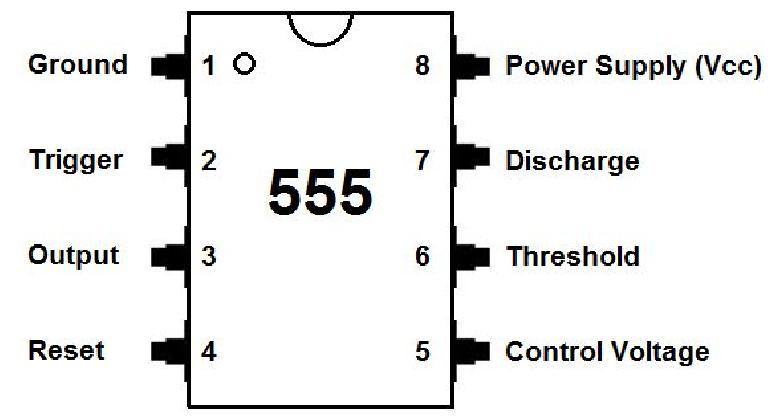

Uses include LED and lamp flashers, pulse generation, logic clocks, tone generation, security alarms, pulse position modulation and so on. Astable (free-running) mode – the 555 can operate as an electronic oscillator.Applications include timers, missing pulse detection, bounce-free switches, touch switches, frequency divider, capacitance measurement, pulse-width modulation (PWM) and so on.

Monostable mode – in this mode, the 555 functions as a "one-shot" pulse generator.Uses include bounce-free latched switches. Bistable mode or Schmitt trigger – the 555 can operate as a flip-flop, if the DIS pin is not connected and no capacitor is used.

Positive supply voltage, which is usually between 3 and 15 V depending on the variation. Open collector output which may discharge a capacitor between intervals. The timing (OUT high) interval ends when the voltage at THR ("threshold") is greater than that at CTRL (2/3 VCC if CTRL is open). Provides "control" access to the internal voltage divider (by default, 2/3 VCC). A timing interval may be reset by driving this input to GND, but the timing does not begin again until RESET rises above approximately 0.7 volts. This output is driven to approximately 1.7 V below +VCC, or to GND. Output of the timer totally depends upon the amplitude of the external trigger voltage applied to this pin. More simply we can say that OUT will be high as long as the trigger is kept at low voltage. The OUT pin goes high and a timing interval starts when this input falls below 1/2 of CTRL voltage (which is typically 1/3 VCC, CTRL being 2/3 VCC by default if CTRL is left open). Ground reference voltage, low level (0 V) Pin 2- (TRIG).







 0 kommentar(er)
0 kommentar(er)
